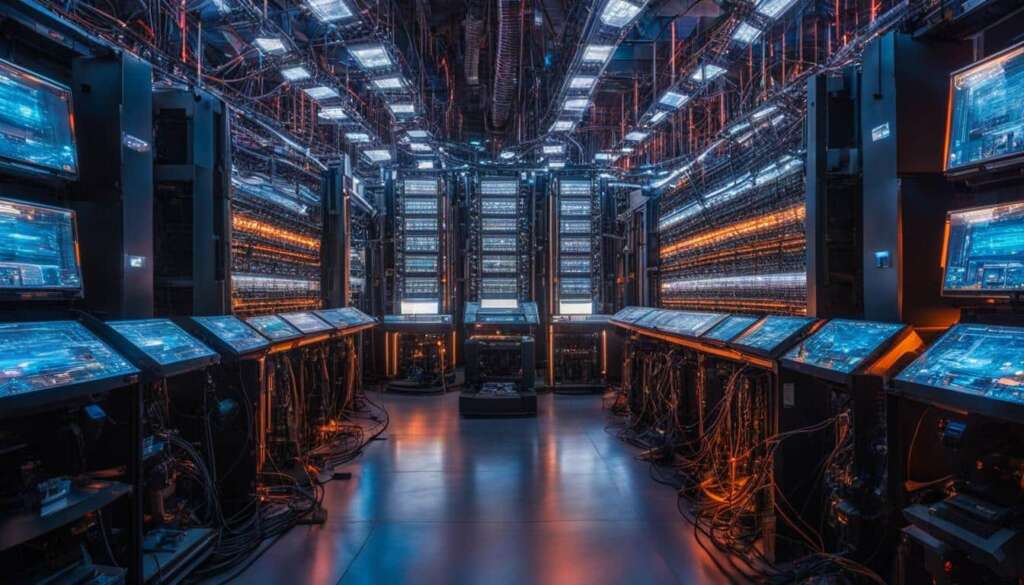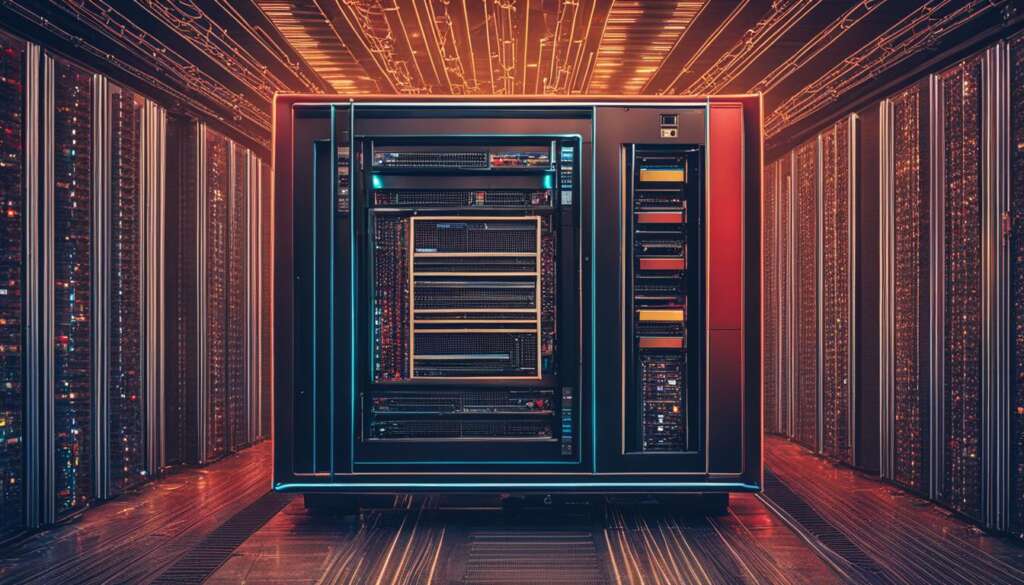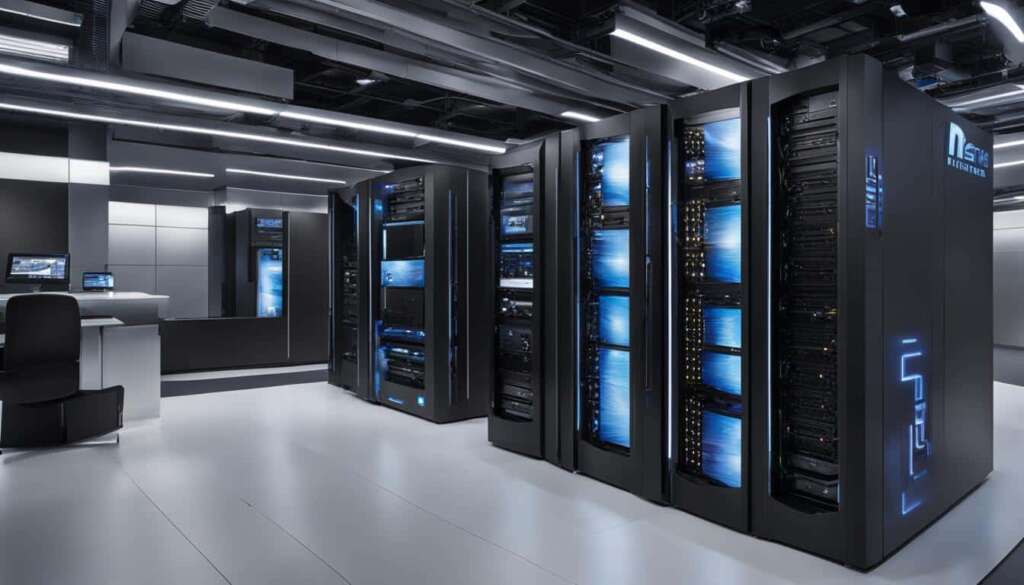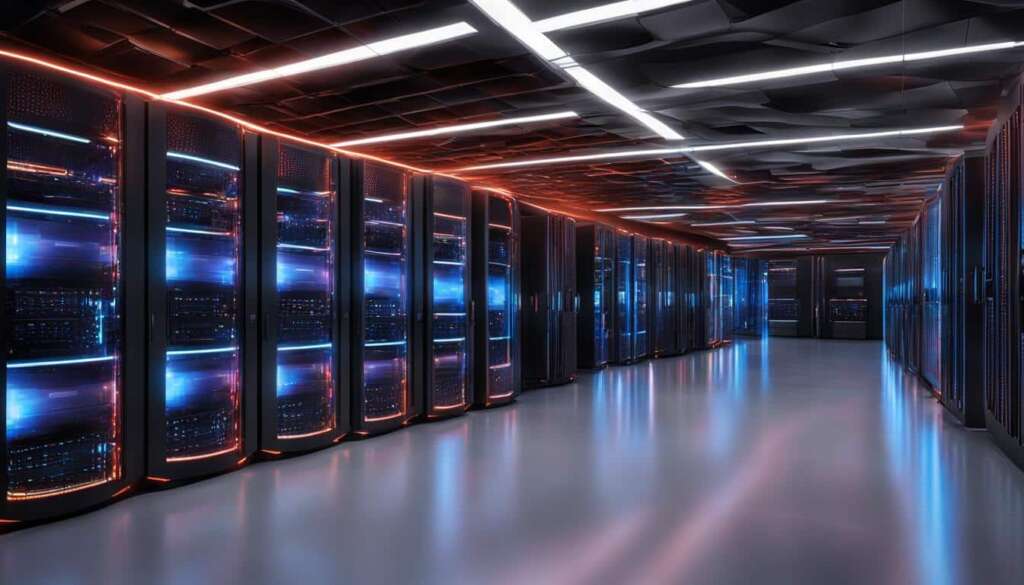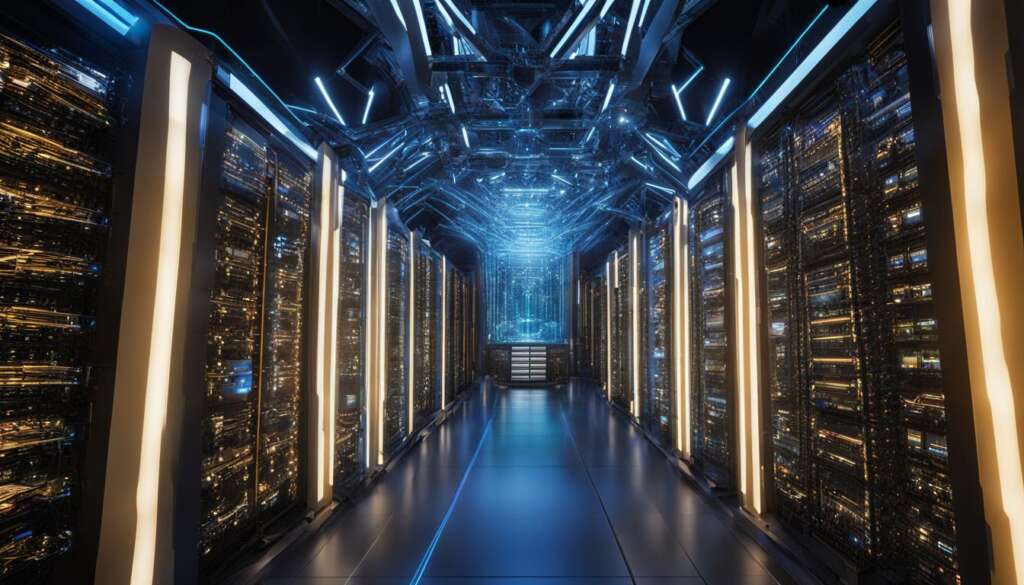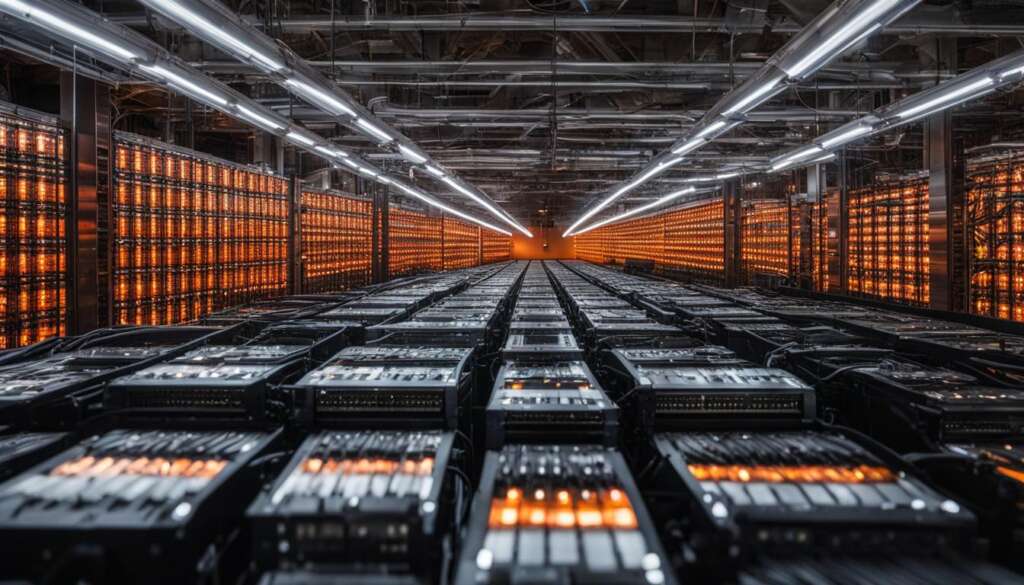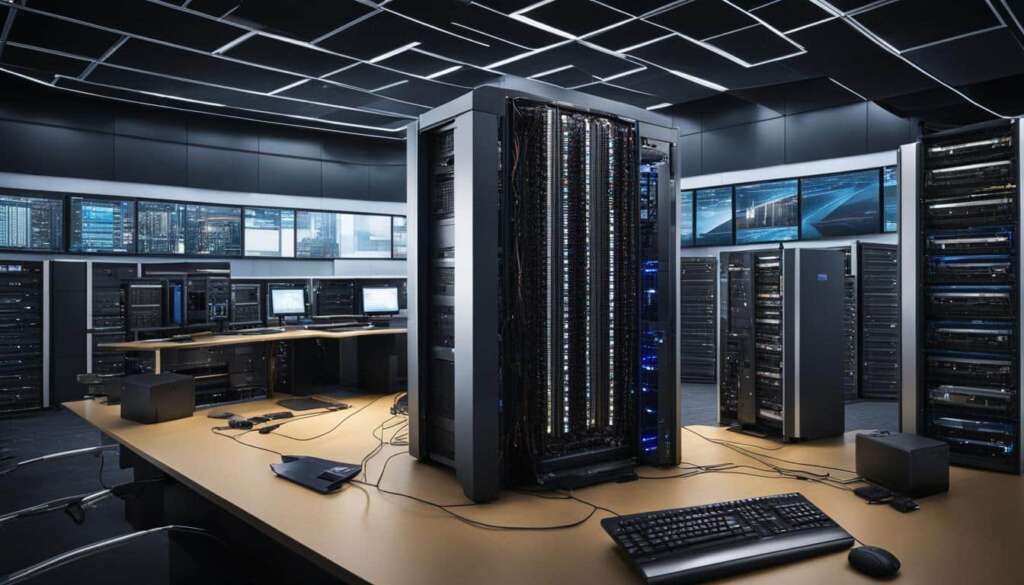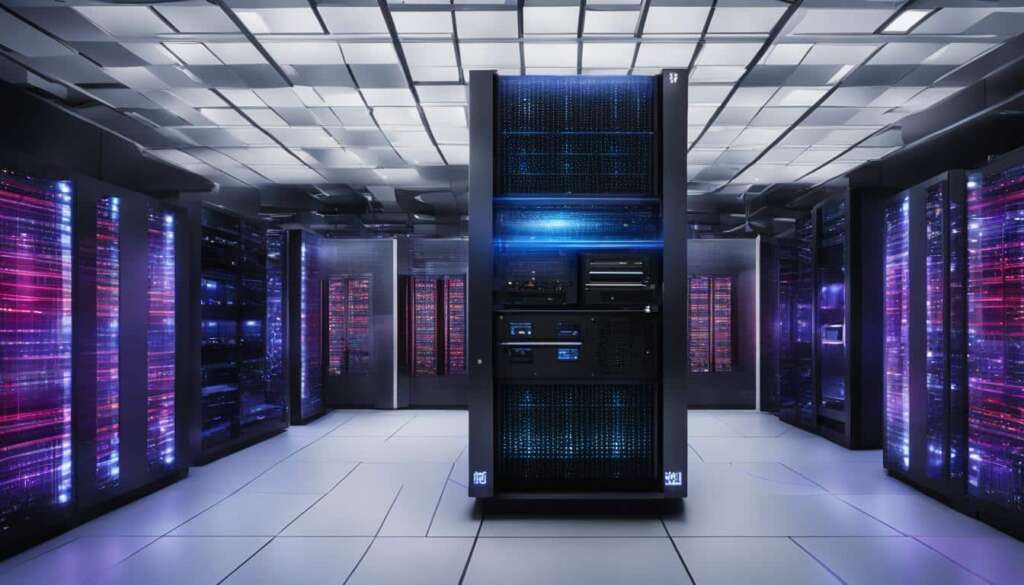Table of Contents
Mainframes are the unsung heroes of the technology world, powering critical operations on a global scale. A mainframe computer is the backbone of major industries and businesses, with over 70% of Fortune 500 companies relying on their robustness and reliability for mission-critical workloads. Despite the emergence of new technologies, mainframes remain indispensable in ensuring the smooth functioning of businesses and organizations worldwide.
In this article, we will delve into the definition of mainframes, their role in various sectors, and their unmatched significance in today’s digital landscape.
Before we dive into the specifics, let’s first understand what a mainframe truly is and how it differs from other computing systems.
A mainframe computer is a high-performance and highly reliable machine, designed to handle large-scale processing and data storage with unparalleled efficiency. Unlike personal computers or servers, mainframes are purpose-built for enterprise-level workloads, operating with exceptional speed and precision.
The power of mainframes lies in their ability to process massive volumes of data and provide uninterrupted performance, making them ideal for industries with complex requirements such as financial services, healthcare systems, government services, e-commerce transactions, manufacturing, and telecommunications.
In the following sections, we will explore the prevalence of mainframes and their immense impact in key sectors, starting with their role in the financial services industry.
The Prevalence of Mainframes in Financial Services
Mainframes play a crucial role in the financial sector, acting as the backbone of transaction processing. These robust systems ensure secure and reliable handling of global financial transactions on a daily basis. The benefits of mainframes in financial services are numerous:
- Handling large volumes of data: Mainframes are designed to process massive amounts of data efficiently. They can handle the vast number of financial transactions processed by banks, stock exchanges, and other financial institutions.
- High availability and scalability: Mainframes are built to provide uninterrupted service, even during peak periods. They can seamlessly scale their processing power and memory capacity to meet the increasing demands of the financial industry.
- Advanced security features: Mainframes are known for their robust security measures. With encryption, access controls, and auditing capabilities, they ensure the confidentiality, integrity, and availability of financial data.
Mainframes are built on a highly reliable architecture that allows for efficient processing and storage of critical financial information. This architecture consists of multiple layers, including hardware, operating systems, software, and utilities. The combination of these elements creates a high-performance computing environment that ensures the smooth functioning of financial services.
In the financial sector, where security, reliability, and performance are paramount, mainframes continue to be the technology of choice. Their ability to handle large volumes of data, provide high availability and scalability, and offer advanced security features makes them indispensable in the ever-evolving world of finance.
Mainframes in Healthcare Systems
Mainframes are instrumental in managing vast amounts of patient data securely in healthcare systems. They are used for electronic health records, billing systems, and other critical applications. Mainframes offer high performance, reliability, and data integrity, making them ideal for handling sensitive healthcare information. In comparison to servers, mainframes provide superior processing power, scalability, and reliability, ensuring uninterrupted access to patient data and the smooth operation of healthcare services.
Healthcare systems rely on mainframe systems to handle the massive volumes of patient data generated on a daily basis. Mainframes offer unparalleled processing power, enabling healthcare organizations to efficiently manage complex data sets and critical applications. With the ability to process and store large amounts of data, mainframes ensure the availability and integrity of patient information.
“Mainframes provide the backbone for managing and maintaining electronic health records, streamlining billing processes, and supporting critical healthcare applications. Their high performance, reliability, and data integrity make them a trusted choice in the healthcare industry.”
In comparison to servers, mainframes excel in various aspects essential for healthcare systems. One of the key advantages is their processing power. Mainframes can handle extensive data processing tasks efficiently, allowing healthcare organizations to analyze vast amounts of patient data in real-time. This processing power is critical for diagnosing and treating patients, conducting medical research, and improving healthcare outcomes.
Scalability is another area where mainframes outshine servers in healthcare systems. Mainframes have the ability to seamlessly scale up or down based on the healthcare organization’s needs. This scalability ensures that as the volume of patient data grows, the mainframe systems can handle the increasing workload without compromising performance or data integrity.
Reliability is paramount in healthcare systems, where patient care and safety depend on immediate and accurate access to information. Mainframes are designed to provide high availability and minimize downtime, ensuring uninterrupted access to patient data. Their robust architecture and redundancy features contribute to the reliability and resilience of mainframe systems, making them an ideal choice for healthcare organizations.
Overall, mainframes play a critical role in healthcare systems, powering the management and security of patient data. With their superior processing power, scalability, and reliability, mainframes provide the backbone for vital healthcare applications and services.
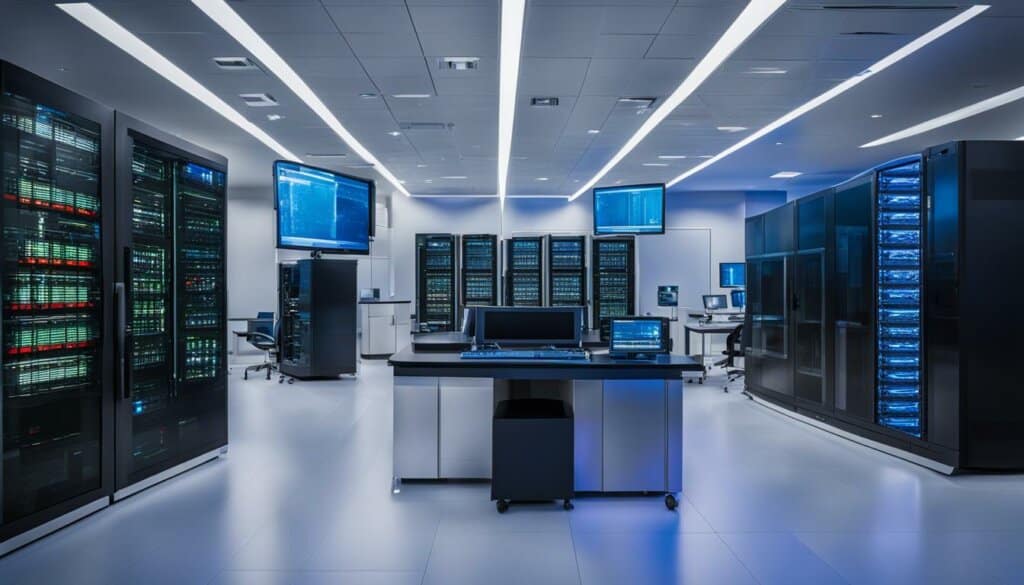
| Aspect | Mainframes | Servers |
|---|---|---|
| Processing Power | Superior | Limited |
| Scalability | Highly scalable | Less scalable |
| Reliability | Highly reliable | Less reliable |
| Data Integrity | Ensured | Potential vulnerabilities |
Mainframes in Government and Public Services
Governments globally rely heavily on mainframes to manage citizen data, tax systems, and other essential services. Mainframes play a crucial role in ensuring the smooth functioning of public services, offering robust security, scalability, and high availability. When it comes to comparing mainframes with cloud computing, mainframes provide several advantages. They offer dedicated resources, allowing governments to have greater control over their data and ensuring the highest levels of data security. Mainframes prove indispensable in maintaining the integrity and reliability of government IT infrastructure.
As governments continue to digitize their operations and provide online services to citizens, mainframes serve as the backbone of stability and security. They enable governments to handle massive amounts of sensitive data while ensuring uninterrupted service delivery. With mainframes, governments can maintain control over their data and have a customized infrastructure built specifically to meet their unique needs. The dedicated resources offered by mainframes provide the assurance of consistent performance and uninterrupted operations, which is crucial for managing critical government services.
Mainframes in E-commerce and Manufacturing
Mainframes play a pivotal role in supporting the operations of the e-commerce and manufacturing industries. With their unmatched processing power, reliability, and scalability, mainframes ensure the seamless and secure handling of the enormous volume of transactions that take place daily in these sectors. Whether it’s facilitating online purchases or optimizing supply chain operations, mainframe systems deliver exceptional performance and control over data.
-
E-commerce:
In the world of e-commerce, where every second counts, mainframes prove their worth by offering robust support for handling large transaction volumes. Be it retail giants like Amazon or smaller online businesses, mainframes provide the necessary compute power to process orders, manage inventory, and securely handle customer data.
Mainframes empower e-commerce platforms to handle the immense load of transactions, ensuring a seamless shopping experience for customers worldwide.
-
Manufacturing:
In the manufacturing industry, mainframes optimize supply chain operations to enhance efficiency and productivity. These systems help streamline production processes, manage inventory levels, and track shipments, ensuring timely delivery and cost-effective operations.
“Mainframes bolster the manufacturing sector by providing real-time visibility into the production process, enabling companies to make data-driven decisions and optimize their supply chain.”
Compared to conventional servers and cloud computing, mainframes offer distinct advantages in terms of performance and control over data. Their ability to handle high transaction volumes, their exceptional reliability, and their sophisticated processing capabilities make them the preferred choice for e-commerce giants and manufacturing enterprises alike.
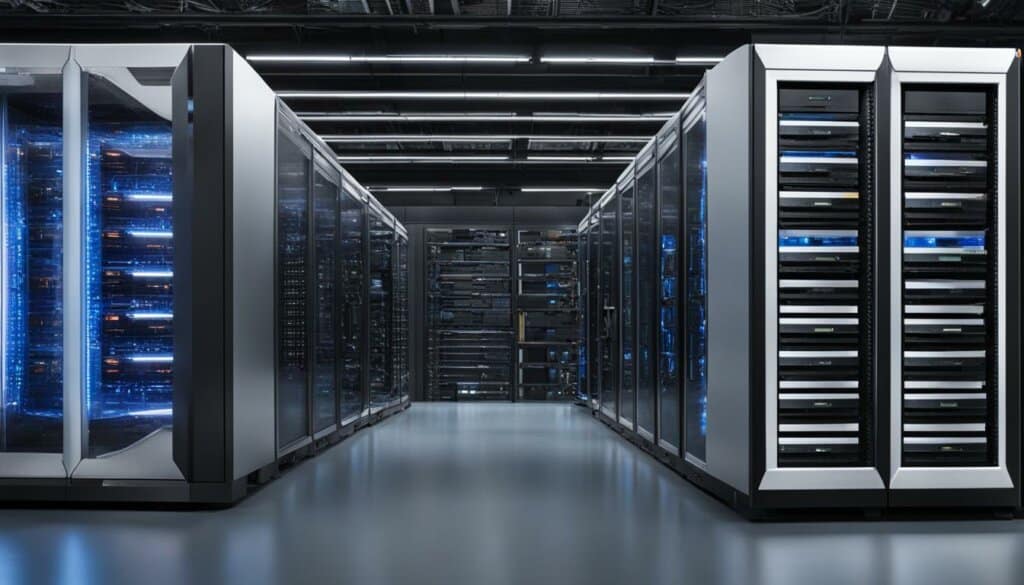
| Mainframes | Servers | Cloud Computing |
|---|---|---|
| Exceptional processing power | Limitations in handling large transaction volumes | Varying performance based on cloud provider and network connectivity |
| Unmatched reliability and uptime | Vulnerability to hardware failures | Dependent on the availability and reliability of the cloud service provider |
| Superior control over data security | Security concerns with data privacy and breaches | Reliance on cloud service provider’s security measures |
Conclusion
Mainframes have stood the test of time, remaining a technology stalwart for over 60 years. Their long-term viability is evident, with a significant number of IT decision-makers affirming their strategic importance. Mainframes continue to be the backbone of stability, powering the essential functions of businesses and organizations worldwide.
While mainframe migration may be a complex process, businesses must consider their options based on factors such as time frame, budget, and the criticality of applications. Whether through rehosting or refactoring, the mainframe’s compute power remains essential for organizations. Mainframes provide the foundation of mainframe technology and architecture, ensuring robustness, reliability, and scalability for mission-critical workloads.
As technology advances, the mainframe’s role in various industries remains indispensable. From financial services to healthcare systems, government and public services to e-commerce and manufacturing, mainframes offer the performance, security, and control required to handle vast volumes of data and provide uninterrupted services. Embracing mainframe technology and architecture helps businesses navigate the ever-changing technological landscape and maintain their competitive edge.
FAQ
What is a mainframe?
A mainframe is a powerful computer that serves as the backbone of major industries and businesses, providing robustness and reliability for critical operations globally.
How prevalent are mainframes in financial services?
Mainframes play a crucial role in the financial sector, acting as the backbone of transaction processing. Over 70% of Fortune 500 companies rely on mainframes for their mission-critical workloads in areas such as global financial transactions, e-commerce transactions, and secure data handling.
What are the benefits of mainframes in financial services?
Mainframes in financial services offer the ability to handle large volumes of data, provide high availability and scalability, and offer advanced security features. These robust systems ensure the secure and reliable handling of critical financial information.
How do mainframes benefit healthcare systems?
Mainframes are instrumental in managing vast amounts of patient data securely in healthcare systems. They offer high performance, reliability, and data integrity compared to servers. Mainframes provide superior processing power, scalability, and reliability, ensuring uninterrupted access to patient data and the smooth operation of healthcare services.
How do mainframes compare to servers in healthcare systems?
Mainframes provide superior processing power, scalability, and reliability compared to servers in healthcare systems. They ensure high performance, data integrity, and uninterrupted access to patient data, making them ideal for handling sensitive healthcare information.
Why are mainframes important for government and public services?
Governments worldwide rely heavily on mainframes for managing citizen data, tax systems, and other essential services. Mainframes offer robust security, scalability, and high availability. In comparison to cloud computing, mainframes provide dedicated resources, greater control over data, and higher levels of security, ensuring the smooth functioning of public services.
How do mainframes compare to cloud computing in government and public services?
Mainframes provide greater control over data and higher levels of security compared to cloud computing in government and public services. They play a crucial role in maintaining the integrity and reliability of government IT infrastructure.
How do mainframes benefit e-commerce and manufacturing industries?
Mainframes are essential in e-commerce and manufacturing industries as they handle a tremendous volume of transactions, ensuring seamless and secure online shopping experiences. Mainframes provide the processing power, reliability, and scalability necessary to meet the demands of e-commerce giants. In manufacturing, mainframes optimize supply chain operations, ensuring efficient production and distribution processes.
How do mainframes compare to servers and cloud computing in e-commerce and manufacturing industries?
Mainframes offer superior performance and control over data compared to servers and cloud computing in e-commerce and manufacturing industries. They provide the needed processing power, reliability, and scalability, ensuring seamless online experiences and optimized supply chain operations.
Can mainframes be replaced by new technologies?
Mainframes have stood the test of time, remaining a technology stalwart for over 60 years. They continue to be the backbone of stability, powering the essential functions of businesses and organizations worldwide. While mainframe migration may be a complex process, businesses must consider their options based on factors such as time frame, budget, and the criticality of applications, ensuring the mainframe’s continued compute power for organizations.

